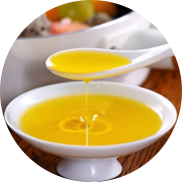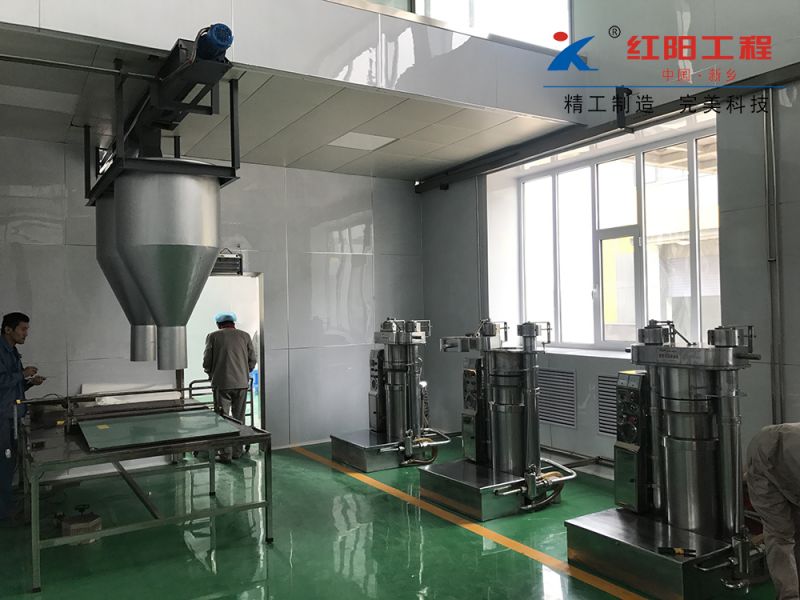153-0373-2222
138-3908-0089
Sunflower Seed Oil Extraction Equipment
The sunflower seed oil extraction equipment currently developed and produced by Xinxiang Hongyang Machinery Co. Ltd is significant for its ability to extract the highly nutritious edible oil from sunflower seeds.
Ingredients
Sunflower seeds, the fruit of the sunflower, are used for both consumption and oil production. Rich in unsaturated fatty acids, various vitamins, and trace elements, sunflower seeds are a popular snack and a source of edible oil due to their pleasant taste.
every 100 grams of sunflower seeds contain 597 calories, 23.9 grams of protein, 49.9 grams of fat, 13 grams of carbohydrates, 72 milligrams of calcium, 5.7 milligrams of iron, 238 milligrams of phosphorus, 562 milligrams of potassium, 5.5 milligrams of sodium, 2.51 milligrams of copper, 264 milligrams of magnesium, 6.03 milligrams of zinc, 1.21 micrograms of selenium, 5 micrograms of vitamin A, 0.36 milligrams of vitamin B1, 0.2 milligrams of vitamin B2, 34.53 milligrams of vitamin E, 0.03 milligrams of carotene, 280 micrograms of folic acid, and 4.8 milligrams of niacin.
Principle and Process
The production of sunflower oil generally involves two methods: pressing and extraction (refining).
Pressing Method
Also known as the "physical pressing method," this method involves using external force to squeeze the oil out of the oilseeds without the use of other chemical solvents, thus avoiding the residue of organic solvents in the oil.
The pressing process retains the effective components of sunflower seeds to a great extent, including polyunsaturated fatty acids, as well as proteins, dietary fiber, vitamins, trace elements, and other nutrients beneficial to the human body, making it more suitable for specific health supplements.
Extraction Method (Refining Method)
The oil produced by the extraction process, also known as extracted oil, is obtained by using organic solvents (such as gasoline, ethanol, etc.) to extract the oil from the oilseeds. The extraction method involves using solvent oil (light gasoline No. 6) to extract the oil from the raw material after soaking, followed by high-temperature extraction to remove the oil. Initially, the "oil" extracted is a mixture of organic solvents and oil, which is not edible and must undergo a series of refining processes (such as degreasing, degumming, dehydrating, deodorizing, deacidifying, decolorizing, etc.) before it can be consumed. This oil generally has a lighter color and a weaker or no natural seed flavor. The extraction process can almost extract all the oil from the oilseeds, making it a highly economic and widely used method in the modern oil industry.
Production Process
The production process includes screening, impurity removal, dehusking, crushing, steaming and frying, pressing, crude oil pressing, coarse filtering, fine filtering, low-temperature crystallization and maturation, low-temperature filtering, and finally, sunflower seed oil.
Advantages: Retains almost all the nutrients in sunflower seed oil, has a refreshing taste without greasiness, and is rich in polyunsaturated fatty acids.
Disadvantages: Lower oil yield, relatively higher cost.
Extraction Method
Advantages: Very high oil yield, low cost, and higher economic benefits. It is a widely used processing method in the modern oil industry.
Disadvantages: Destroys some nutrients, has a minimal residual amount of organic solvents (in compliance with national standards).
Sunflower Seed Oil
Oil extracted from sunflower seeds is known as sunflower seed oil. It has a golden color, clarity, and a pleasant aroma, making it the primary cooking oil for Europeans and Russians. Sunflower oil is pure, clear, and fragrant. Due to its rich content of linoleic acid and other health-promoting nutrients, it is hailed as a "health food," "nutrient oil," or "healthy oil" internationally.
Sunflower oil is a healthy cooking oil known for its high linoleic acid content. According to Professor Cao Wanxin of the Oil Research and Design Institute of the National Food Reserve Administration in Xi'an, the consumption of appropriate oil products for a long time can significantly improve symptoms of cardiovascular and cerebrovascular diseases such as coronary heart disease, stroke, cerebral thrombosis, arteriosclerosis, and hypertension. Sunflower oil is an excellent choice among healthy oils and has become a preferred oil for consumers and chefs. It ranks third in global consumption among all vegetable oils.
Sunflower seed oil contains phytosterols, vitamins, linoleic acid, and other beneficial substances for humans, with a high content of natural vitamin E among all major vegetable oils; the linoleic acid content can reach about 70%.
Sunflower seed oil has the ability to reduce serum cholesterol levels, lower triglyceride levels, and has a hypotensive effect. Moreover, sunflower oil is light and transparent, preserves the natural flavor of food during cooking, and has a high smoke point, eliminating the harm of smoke to the human body.
Refined sunflower seed oil has a clear, light yellow or greenish yellow color with a pleasant aroma and pure taste. The composition of fatty acids in sunflower seed oil is affected by climatic conditions; cold-region production has about 15% oleic acid and 70% linoleic acid, while warm-region production has about 65% oleic acid and 20% linoleic acid. The human digestibility of sunflower seed oil is 96.5%, and it is rich in linoleic acid, which can significantly reduce cholesterol, prevent vascular hardening, and prevent coronary heart disease. Additionally, the content of physiologically active a-tocopherol in sunflower seed oil is higher than that of most vegetable oils, and the ratio of linoleic acid to vitamin E is balanced, facilitating human absorption and utilization. Therefore, sunflower seed oil is a high-nutrient, beneficial oil for human health.


























































